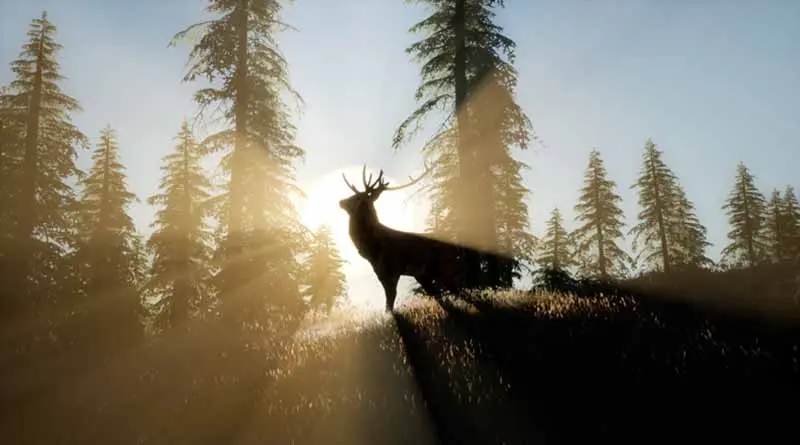
What Are The Best Tips For Elk Hunting?
The Silent Call of the Wild: Mastering the Art of Elk Hunting
As dawn breaks over the rugged mountains, a chill breeze carries the distant bugle of an elk. It’s a sound that stirs primal excitement within, beckoning me into the wilderness. The pursuit of elk, majestic and wily, is a challenge that tests the mettle of any hunter. It’s not just about the hunt; it’s about understanding the animal, the land, and your own limits. This brings us to the question often pondered over campfires and pre-dawn preparations: What are the best tips for elk hunting?
Mastering Elk Hunting: A Blend of Tradition and Innovation
Elk hunting is akin to a ritual that intertwines patience, skill, and a profound respect for nature, making it a sublime challenge that extends far beyond ordinary hunting practices. It requires an intricate understanding of elk behavior, an acute awareness of the environment, and proficiency in advanced hunting techniques. Each moment spent in the pursuit of elk is a delicate balance of action and observation, demanding both physical endurance and intellectual engagement.
The Complex Dance of Elk Hunting
Understanding Elk Behavior: Elk are creatures of habit but also of adaptation. Seasonal changes, the state of the weather, and their breeding cycles all have a significant impact on their behaviors. A hunter must be attuned to these patterns, as misinterpreting or overlooking them often results in missed opportunities. The fall rut, for example, dramatically alters the behavior of bulls, making them more aggressive and vocal, which can be leveraged using specific calling techniques.
Navigating Challenging Terrains: Elk typically inhabit some of the most formidable terrains. They thrive in the steep, mountainous regions that pose significant challenges to navigation and physical stamina. The ruggedness of these areas not only tests a hunter’s endurance but also their ability to adapt to rapid environmental changes—from crossing rivers to scaling rocky inclines—all while maintaining enough energy and focus to make a successful kill.
Weather and Timing Considerations: Weather conditions can greatly influence elk movements and behaviors. Sudden weather changes can either enhance or hinder your hunting success. Moreover, understanding the best times of day for hunting—such as dawn and dusk, when elk are more active—can significantly increase the likelihood of a successful hunt.
Strategic Approaches to Enhance Elk Hunting Success
1. Pre-Hunt Preparation:
- Scouting: Leveraging both modern technology, such as satellite imagery and traditional methods, like on-foot scouting, helps paint a comprehensive picture of the hunting landscape. Digital tools can reveal hard-to-see water sources and natural funnels, while physical presence in the terrain allows you to experience the environment much like the elk do.
- Physical Conditioning: Given the demanding nature of elk habitats, conditioning your body through cardiovascular and strength training is crucial. This preparation ensures you’re able to traverse difficult terrains without compromising your ability to make a precise shot when the opportunity arises.
2. Behavioral Insights and Communication:
- Studying Elk Patterns: Becoming familiar with how elk respond to the changing seasons and their environmental interactions is crucial. This knowledge guides when to hunt, where to set up, and how to approach them.
- Calling Mastery: Effective communication through calls is an art form that can manipulate elk behavior to your advantage, especially during the rut. Understanding and replicating the various calls can draw out elusive bulls into more favorable positions for a shot.
3. Tactical Execution on the Hunt:
- Stealth and Patience: The ability to move silently and remain undetected is invaluable. Utilizing the wind to mask your scent, moving with minimal noise, and exercising patience until the perfect shot presents itself are key components.
- Optimal Gear: Investing in high-quality optics aids in spotting elk from a distance without disturbing them. Similarly, a reliable and powerful rifle or bow ensures that once you have the shot, it counts.
4. Post-Shot Procedures:
- Tracking: Learning to track an injured elk is essential for ethical hunting. It ensures that if the animal is wounded and not downed, it can be quickly and humanely dispatched.
- Field Dressing: Efficient field dressing not only preserves the quality of the meat but is also a respectful way to honor the life of the animal and the spirit of the hunt.
The Ethical and Reverent Approach to Elk Hunting
Elk hunting transcends the act of hunting—it’s a profound engagement with the wild. It teaches us about the fragility of life, the strength of perseverance, and the importance of harmony with nature. Every hunter stepping into the elk’s domain carries not just a weapon but a responsibility to uphold the ethics of hunting and reverence for the natural world. Through meticulous preparation, strategic implementation, and respectful practices, the essence of elk hunting is captured in each quiet, thoughtful step through the wilderness.
Tools and Resources Needed
Equip yourself with the following to maximize your elk hunting efficiency:
- Topographical Maps and GPS Devices: For navigation and scouting.
- Quality Optics: Binoculars and range finders.
- Elk Calls: A variety of calls to suit different phases of the rut.
- Appropriate Clothing: For variable weather conditions, ensure mobility and camouflage.
- Hunting License and Tags: Ensure all are in order for the region and season.
The essence of elk hunting lies not in the quantity of the game but the quality of the experience. It’s a confluence of preparation, understanding, and respect for the animal and the wilderness. Each expedition teaches something new about the elk, the environment, and yourself as a hunter. With the right preparation, understanding, and respect for nature, each venture into elk territory becomes a profound journey into the heart of the wild, where every whisper of the forest might signal the presence of the elusive elk.






